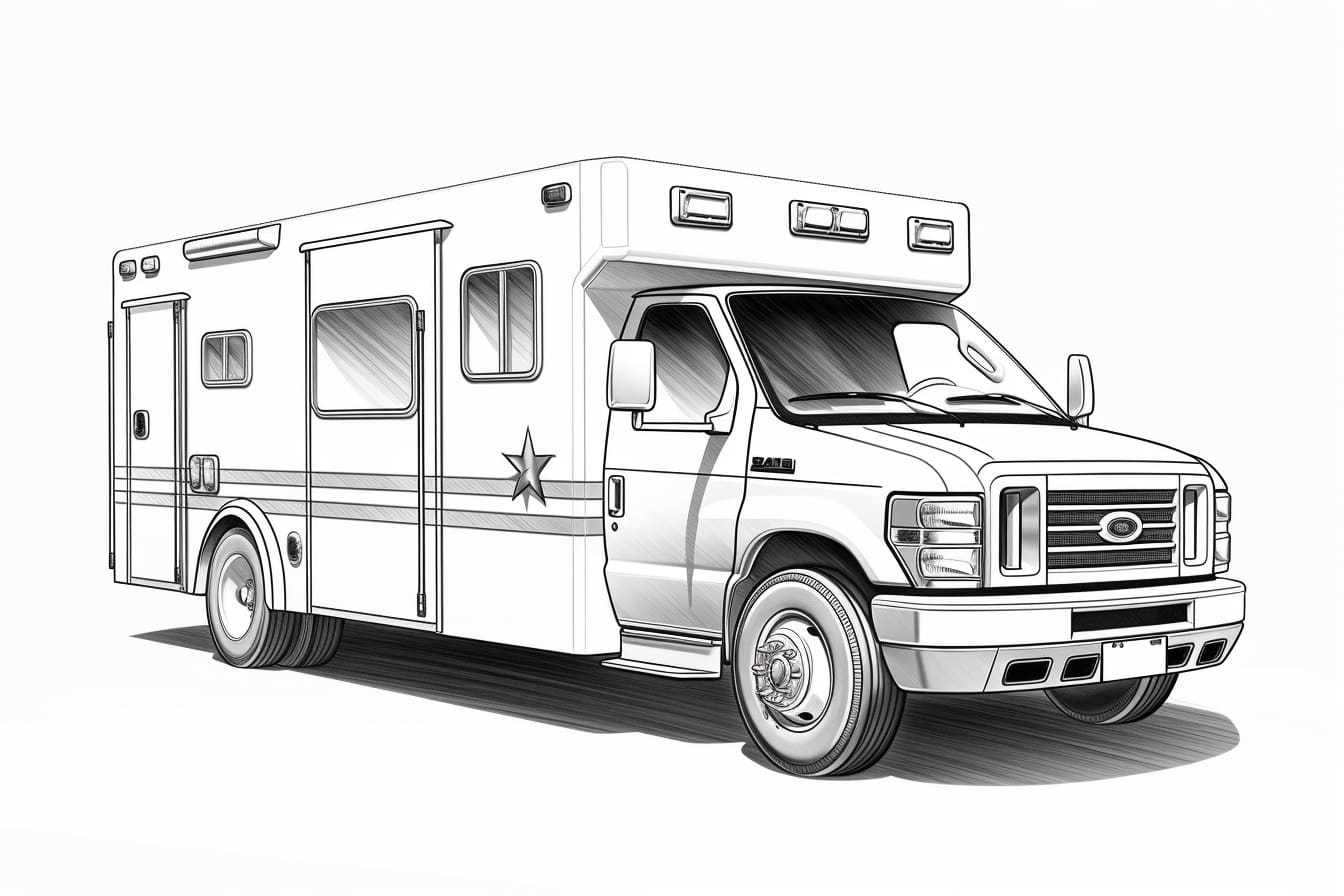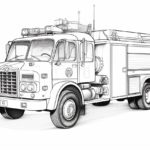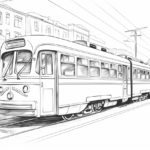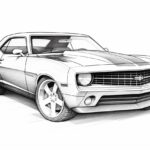Welcome to the exciting world of drawing! Today, we will explore the intricate and dynamic subject of an ambulance. Ambulances are not only essential vehicles in emergency situations, but they also possess a unique and recognizable shape that offers a wonderful challenge for artists. From the bold red and white colors to the flashing lights and sirens, there are endless details to capture in a drawing of an ambulance. Join me as we delve into the art of capturing movement, perspective, and emotion in our depiction of this vital and powerful symbol of help and hope. Let’s grab our pencils and get ready to bring this iconic vehicle to life on paper!
Materials Required
To draw an ambulance, you will need the following materials:
- Paper: Choose a sturdy paper that can handle the drawing materials you plan to use.
- Pencil: A regular graphite pencil for sketching and outlining.
- Eraser: A good quality eraser to correct any mistakes.
- Ruler: To help with drawing straight lines and maintaining proportions.
- Markers or colored pencils: If you want to add color to your drawing, you can use markers or colored pencils.
- Reference image: It can be helpful to have a reference image of an ambulance to guide your drawing.
With these materials, you can create a detailed and accurate drawing of an ambulance.
How to Draw an Ambulance: a Step-by-step Guide
Step 1: Gather Your Materials
Before you start drawing an ambulance, make sure you have all the necessary materials at hand. You will need a pencil, eraser, paper, ruler (optional for straight lines), and coloring tools if you want to add color to your drawing.
Step 2: Start with the Basic Shape
Begin by drawing a rectangle for the main body of the ambulance. This rectangle will be slightly longer than it is tall, with rounded corners. This will form the base of the ambulance.
Step 3: Add Details to the Body
Next, draw a smaller rectangle on top of the main body to represent the driver’s cabin. Add a smaller rectangle at the back for the patient compartment. Draw lines to indicate doors and windows on the ambulance.
Step 4: Draw the Front of the Ambulance
Sketch the front of the ambulance by adding a smaller rectangle at the front of the driver’s cabin for the windshield. Add two small circles for the headlights and a larger rectangular shape for the grill.
Step 5: Add Wheels and Details
Draw two sets of circles underneath the main body of the ambulance to represent the wheels. Add details such as lights, sirens, and any other markings that are typically found on an ambulance.
Step 6: Refine and Erase Guidelines
Go over your drawing and refine any lines that need adjusting. Erase any guidelines that you no longer need, such as the initial shapes used to build the ambulance’s structure.
Step 7: Add Color (Optional)
If you want to add color to your drawing, use colored pencils, markers, or crayons to bring your ambulance to life. Ambulances are typically white with red and blue emergency lights, but feel free to add your own creative touches.
Step 8: Final Touches
Once you are satisfied with your drawing, go over the lines with a pen or darker pencil to make them stand out. Add shading or highlights to give your ambulance more depth and dimension.
Step 9: Share Your Artwork
Show off your finished ambulance drawing to friends and family, or even on social media. Don’t forget to sign your work to make it truly yours!
Conclusion
In conclusion, drawing an ambulance requires attention to detail, practice, and a good understanding of shapes and proportions. By following the step-by-step guide provided in this article and practicing regularly, you can improve your drawing skills and create realistic and detailed ambulance illustrations. Remember to be patient with yourself, as mastering any art form takes time and dedication. Keep practicing, experimenting with different techniques, and most importantly, have fun expressing your creativity through your drawings.
Fun Facts About Ambulances
- The word “ambulance” comes from the Latin word “ambulare,” which means “to walk or move about.”
- The first recorded use of ambulances for medical purposes dates back to the Knights of St. John in the 11th century.
- The first motorized ambulance was used in 1899 in Chicago, Illinois.
- The iconic siren sound commonly associated with ambulances was first used in the 1960s to alert other drivers to make way for the emergency vehicle.
- Some ambulances are equipped with advanced life support capabilities, allowing paramedics to perform procedures such as intubation, defibrillation, and medication administration on the scene.
- In some countries, specially trained doctors accompany ambulance crews to provide advanced medical care during transport.
- Ambulances are designed to provide a smooth ride for patients, with features such as air suspension and specialized stretcher systems.
- The color of ambulances varies by region and country, with common colors including white, yellow, and red.
- Ambulances are equipped with a range of medical equipment, including oxygen tanks, cardiac monitors, and emergency medications to stabilize patients before reaching the hospital.
- Some ambulances are specially designed for specific purposes, such as neonatal ambulances for transporting premature babies or bariatric ambulances for transporting overweight patients.
Suggestions for Scenes and Settings for Ambulance Drawings
- Emergency Scene: A dramatic illustration of an ambulance speeding through a city street with its lights flashing and sirens blaring, surrounded by concerned onlookers and bustling traffic.
- Hospital Arrival: A detailed drawing of an ambulance pulling up to the entrance of a hospital with medical staff waiting to receive the patient on a busy day.
- Rural Rescue: An ambulance navigating a winding country road, surrounded by lush green fields and tall trees, on its way to a remote location for a rescue mission.
- Nighttime Emergency: A nighttime scene with an ambulance parked in front of a dimly lit building, casting an eerie glow with its emergency lights on.
- Accident Response: An intense drawing of an ambulance at the scene of a car crash, with paramedics administering first aid to injured individuals amidst debris and emergency personnel.
- Mountain Rescue: An ambulance making its way up a rugged mountain terrain, with snow-capped peaks in the background and a sense of urgency in the rescue mission.
- Urban Street Scene: An urban setting with an ambulance navigating through a busy intersection, with tall buildings and bustling city life in the background.
- Water Rescue: An ambulance parked by the waterfront, with paramedics preparing to assist in a water rescue operation, showcasing the dynamic nature of emergency response.
- Air Ambulance: A unique drawing of a helicopter ambulance landing in a remote location, with a sense of urgency and high-stakes rescue mission in progress.
- Historical Ambulance: A vintage ambulance from the past, parked in front of a historic building or landmark, showcasing the evolution of emergency medical services over time.









